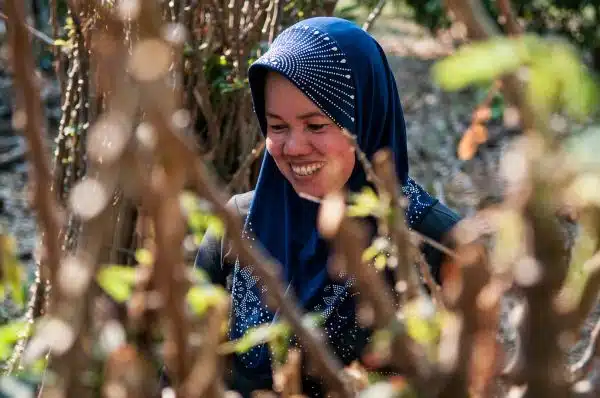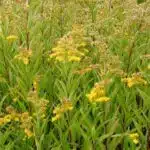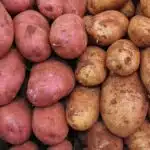Cassava (Manihot esculenta) is a staple food crop that is cultivated in tropical and subtropical regions of the world. It is a highly productive and drought-resistant crop, making it an important source of food security for millions of people in Africa, Asia, and Latin America. Cassava can be grown on a wide range of soils, from sandy to clayey soils, and can tolerate low soil fertility. In this article, we will discuss the key steps involved in growing cassava successfully.
The cultivation of cassava involves several stages, including land preparation, planting, weed control, harvesting, and post-harvest processing. Each stage requires careful planning and execution to ensure optimal yield and quality of the crop. In addition to its nutritional value as a source of carbohydrates and other essential nutrients, cassava also has industrial applications such as the production of biofuels and starch. Therefore, learning how to grow cassava can not only contribute to food security but also provide economic opportunities for farmers and rural communities.
Understanding The Benefits Of Cassava Cultivation
Cassava is a tropical crop that has been cultivated for thousands of years. This starchy root vegetable is an important source of carbohydrates in many countries across the world, particularly in Africa, Asia, and South America. Cassava provides numerous benefits to both human health and the economy.
From a nutritional standpoint, cassava is rich in fiber, vitamins B and C, and minerals such as iron, manganese, and potassium. Its high carbohydrate content makes it an excellent source of energy for those who consume it regularly. Cassava also contains antioxidants that can help protect against chronic diseases such as cancer and heart disease.
Economically speaking, cassava cultivation has significant importance. It is a low-input crop that requires minimal fertilization or irrigation. This makes it an ideal choice for small-scale farmers who may not have access to advanced agricultural technologies. Additionally, cassava processing industries provide employment opportunities for many people around the world.
When considering the benefits of cassava cultivation, it is clear that this crop has immense potential to improve human health and economic prosperity. However, before embarking on the journey of growing cassava one must consider certain factors like choosing the right variety that suits their region’s climatic conditions.
Choosing The Right Cassava Variety For Your Region
1.Climate is an important factor to consider when selecting a cassava variety for a particular region, as different varieties have different tolerances to temperature, soil moisture, and extreme weather.
2.Cassava varieties should be selected based on their resistance to pests in the local area, as this will ensure that yields are not affected by pest damage.
3.The soil requirements of cassava should be taken into account when selecting a particular variety, as different varieties have different soil preferences and nutrient needs.
4.Harvest timing is critical for optimal yields and quality, so it is important to select a variety that is adapted to the local climate and has an appropriate harvest date.
5.Nutrient needs are specific to each variety, and should be taken into account when selecting a variety for a particular region.
6.Storage options should also be considered when selecting a variety, as some varieties require specific storage conditions to maintain their quality.
Climate Considerations
Adapting to the specific climate of a region is crucial when choosing the right cassava variety for cultivation. Cassava can grow in a range of climates, but different varieties thrive in specific conditions. For instance, some species do well in regions with high rainfall and humidity while others are more tolerant to drought. Understanding the climatic requirements of different cassava varieties is essential to maximize their benefits and minimize losses.
Maximizing the benefits of various climates for cassava growth requires careful consideration of factors such as soil type, temperature, and rainfall patterns. In areas with poor soils, it is advisable to plant cassava varieties that are tolerant to low soil fertility. Similarly, planting early maturing varieties in regions with low rainfall can help reduce water stress on the crop. Crop rotation strategies should also be employed to maintain healthy soils and prevent disease buildup.
In conclusion, adapting to different climates is critical when choosing the right cassava variety for cultivation. Horticulturalists and agricultural scientists should consider factors such as soil type, temperature, rainfall patterns, and crop rotation strategies when recommending suitable cassava varieties for a region. By selecting appropriate cultivars and implementing proper agronomic practices, farmers can increase their yield potential and improve food security in their communities.
Resistance To Pests
Another essential factor to consider when selecting the right cassava variety for a region is its resistance to pests. Cassava is prone to attacks from various pests, including mites, mealybugs, and whiteflies, which can cause significant yield losses. To minimize these losses, farmers need to choose cassava varieties that exhibit natural resistance to specific pests prevalent in their regions.
Natural remedies such as intercropping with leguminous crops or using companion planting can help reduce pest populations in cassava fields. These methods promote biological control by encouraging the growth of beneficial insects that prey on pests. Additionally, some cassava varieties come with built-in resistance mechanisms against specific pests, making them less prone to infestations.
While chemical pesticides may be effective in controlling pests, they are not always recommended due to their harmful effects on the environment and human health. Furthermore, repeated use of chemical pesticides may lead to the development of pesticide-resistant pest populations, making them even harder to control. Therefore, it is crucial for farmers and horticulturalists to prioritize natural remedies and resistant cassava varieties when dealing with pest infestations. By doing so, they can minimize crop losses while promoting sustainable agricultural practices.
Soil Requirements
Cassava is a vital crop in many parts of the world, providing food security and income for millions of people. However, its productivity is highly dependent on soil conditions. Therefore, when selecting the right cassava variety for a region, it is essential to consider the soil requirements for that particular variety.
Soil preparation is crucial for successful cassava cultivation. The soil should be well-drained and have good water-holding capacity to ensure adequate moisture levels during the growing season. Additionally, cassava requires fertile soil with high organic matter content to support healthy growth and development. Farmers can achieve this by incorporating organic matter such as compost or manure into the soil before planting.
Nutrient management is also critical in ensuring optimal cassava production. Cassava requires specific nutrients, including nitrogen, phosphorus, potassium, calcium, and magnesium, for proper growth and yield. These nutrients can be supplied through fertilization or intercropping with leguminous crops that fix atmospheric nitrogen into the soil. Farmers should conduct regular soil tests to determine nutrient deficiencies and adjust their fertilization practices accordingly.
In conclusion, selecting the right cassava variety for a region goes beyond considering its pest resistance; it also involves understanding its soil requirements. Proper soil preparation and nutrient management are crucial in achieving optimal cassava production while promoting sustainable agricultural practices. By taking these factors into account when choosing a variety to grow, farmers can increase yields and improve their livelihoods while contributing to global food security efforts.
Selecting And Preparing The Planting Site
After choosing the appropriate cassava variety for your region, the next step is to select and prepare the planting site. Proper preparation of the site ensures optimal growth and yield. The first step in site preparation is to conduct soil testing to determine the soil’s fertility and pH levels.
Soil testing involves collecting soil samples from different locations within the planting area and sending them to a lab for analysis. The results of the analysis will inform you of any nutrient deficiencies or imbalances that need correction before planting. If there are any issues with soil fertility, organic matter can be added to improve it.
Once you have received the results of your soil test, you can begin preparing the site for planting. This includes clearing any vegetation or debris from the area and tilling the soil to loosen it up. Properly tilling the soil ensures that it is aerated and has good drainage, which is important for cassava growth. Afterward, you can create mounds or ridges on which to plant your cassava cuttings or stems.
Preparing the soil for optimal growth requires careful consideration of several factors such as soil type, nutrient content, and drainage capacity. Conducting a thorough soil test helps ensure that these factors are adequately addressed before planting. Adequate site preparation sets a strong foundation for successful cassava production by providing optimum growing conditions for this valuable crop.
Preparing The Soil For Optimal Growth
- Soil pH should be tested prior to planting cassava in order to ensure the most optimal growth.
- Soil fertility can be improved by incorporating organic matter such as compost or manure into the soil.
- Nutrient deficiencies can be addressed by applying the appropriate fertilizer for the crop.
- Additionally, soil pH can be adjusted by applying lime or sulfur to increase or decrease the acidity of the soil.
Testing Soil Ph
As an agricultural scientist or horticulturalist, testing soil pH is a crucial step in preparing the soil for optimal growth of cassava. Measuring acidity is essential as it determines the availability of nutrients to cassava plants. The optimal pH range for cassava growth is between 5.5 and 6.5.
To test soil pH, one can use a soil pH meter or a soil test kit available at garden centers or online stores. It is important to take multiple samples from different areas of the planting site to ensure accurate results. The collected samples are then mixed and tested according to the instructions on the kit or meter.
If the soil pH falls outside the optimal range, corrective measures can be taken by adding lime if the soil is too acidic, or sulfur if it’s too alkaline. Testing and adjusting the soil pH ensures that cassava plants have access to essential nutrients required for healthy growth and high yields.
In summary, measuring acidity and testing soil pH are crucial steps in preparing the soil for optimal growth of cassava. It helps determine nutrient availability and allows for necessary adjustments to be made before planting. By following these steps, farmers can achieve healthy crops with high yields and contribute to serving others through increased food production.
Soil Fertility Improvement
In addition to testing soil pH, improving soil fertility is another crucial step in preparing the soil for optimal growth of cassava. Soil fertility refers to the ability of soil to provide essential nutrients required by plants for healthy growth and development. Fertile soils have a balanced supply of nutrients, adequate water-holding capacity, and good structure that supports root growth.
One way to improve soil fertility is through composting methods. Composting involves breaking down organic matter such as plant residues, animal manure, and kitchen waste into a nutrient-rich material that can be added back to the soil. This process not only adds essential nutrients but also improves soil structure and water-holding capacity. Using compost as a fertilizer reduces the need for synthetic fertilizers, which can be costly and harm the environment.
Another technique for improving soil fertility is crop rotation. Crop rotation involves planting different crops in a specific sequence on the same plot of land over several seasons. This method helps maintain or improve soil fertility by reducing pest and disease pressure, increasing microbial activity, and adding organic matter to the soil. Cassava can be rotated with legumes such as beans or cowpeas because they fix nitrogen in the soil, which benefits subsequent crops like cassava that require high levels of nitrogen.
Propagating Cassava Cuttings
Cassava is propagated through stem cuttings, which can be obtained from mature plants. To ensure the production of healthy and vigorous cassava plants, it is important to use high-quality cuttings that are free from pests and diseases. The best time to take cuttings is during the dry season when the plant has less moisture content.
Pruning techniques are used to ensure that cassava plants produce high-quality stems suitable for propagation. Pruning helps to reduce the number of branches on a plant, thereby allowing maximum resources such as nutrients and water to be directed towards fewer stems. This results in larger stems that can produce higher quality cuttings. Additionally, pruning also helps to control pests and diseases by removing infected parts of the plant.
Cassava storage methods play a crucial role in ensuring successful propagation. Cuttings should be stored in a cool, dry place away from direct sunlight until they are ready for planting. It is important to avoid storing them for too long as this can lead to desiccation or rotting of the cuttings. Proper storage techniques can help retain moisture and prevent fungal growth on the cuttings, resulting in healthy and vigorous plants that are ready for planting.
To continue with propagating cassava cuttings, it is important to understand how to properly plant them.
Planting Cassava Cuttings
Like a diligent farmer preparing the soil for planting, it is important to choose the right planting depth and spacing requirements for cassava cuttings. The ideal depth is between 4-6 inches, allowing the stem to anchor itself firmly in the ground while still exposing enough of the leaves for photosynthesis. Planting too shallow can cause stunted growth and susceptibility to disease, while planting too deep may prevent proper root development.
Spacing requirements are equally important when planting cassava cuttings. Typically, a minimum distance of 3 feet between plants and 6 feet between rows is recommended to allow for adequate growth and maintenance. This also helps minimize competition for nutrients and water, ensuring that each plant receives optimal care.
Proper planting depth and spacing requirements are critical components in cultivating healthy cassava plants. With these factors well established, farmers can move on to other important aspects of growing cassava, such as watering and fertilizing the crops.
Watering And Fertilizing Cassava Plants
- The watering frequency of cassava plants is determined by the local climate, soil type and the size of the plant.
- Fertilizers suitable for cassava plants should contain a balance of macronutrients, such as nitrogen, phosphorus and potassium.
- The fertilizer type used should also take into account the type of soil, pH level and the stage of growth of the cassava plant.
- It is important to monitor the moisture levels of the soil to ensure that the cassava plants have an adequate supply of water and nutrients.
Watering Frequency
Cassava plants are known for their drought tolerance, making them ideal crops in regions with low water availability. However, this does not mean that cassava plants do not require watering. Optimal watering frequency is crucial to maintain healthy yields and plant growth. As an agricultural scientist or horticulturalist, it is essential to understand the best practices for watering cassava plants.
The optimal watering frequency for cassava plants depends on several factors such as soil type, climate, and stage of growth. In general, newly planted cassava requires more frequent watering than established ones. This is because young plants have shallow root systems that are more sensitive to water stress. However, as the plant grows and develops a deeper root system, it becomes more resilient to drought conditions. At this stage, it is recommended to reduce watering frequency while ensuring that the soil remains moist.
It is also important to note that overwatering can be detrimental to cassava plants. Excessive water can lead to root rot and fungal infections that may decrease plant productivity and health. Therefore, proper drainage should be ensured in areas with heavy rainfall or irrigated fields. In summary, as an agricultural scientist or horticulturalist interested in growing cassava plants, optimal watering frequency should be considered alongside other factors such as fertilization and pest management practices for healthy yields and sustainable crop production.
Fertilizer Types
Fertilizer application is just as important as watering for the growth of cassava plants. The type of fertilizer used and the application technique can have a significant impact on plant productivity and soil health. Agricultural scientists and horticulturalists must understand the different types of fertilizers available, including organic and inorganic options, to make informed decisions about what to use.
Organic fertilizers are derived from natural sources such as animal manure, compost, or plant matter. They are typically slower releasing than inorganic fertilizers but offer long-term soil health benefits. Inorganic fertilizers, on the other hand, are chemically synthesized and provide an immediate nutrient boost to plants. However, overuse of inorganic fertilizers can lead to soil degradation and environmental pollution.
Fertilizer application techniques can also affect plant growth and yield. Broadcast application involves spreading fertilizer evenly across the field, while band placement places fertilizer near the root zone where it is most needed. Foliar application involves spraying nutrients directly onto leaves for quick absorption into the plant tissue. The choice of application method depends on factors such as soil type, crop stage, and fertilizer type. By considering these factors when choosing a fertilizer type and application technique, agricultural scientists and horticulturalists can optimize cassava plant growth while also promoting sustainable agricultural practices.
Managing Pests And Diseases
Having properly watered and fertilized your cassava plants, the next step in ensuring a healthy harvest is managing pests and diseases. Integrated pest management (IPM) techniques are recommended for effectively controlling pests without causing harm to the environment or human health. IPM involves combining various methods such as cultural practices, biological control, and chemical control to manage pests.
One cultural practice that can be used in IPM is crop rotation. This involves planting different crops in the same area each growing season to prevent buildup of specific pests and diseases that target cassava plants. Another method is biological control which involves introducing natural predators or parasites to reduce the number of pests attacking cassava plants. For chemical control, it is important to select pesticides that are specifically labeled for use on cassava and follow instructions carefully to avoid overuse or contamination of the environment.
Natural remedies can also be used as part of IPM for managing pests and diseases in cassava plants. For instance, neem oil can be used as a natural pesticide against aphids, whiteflies, and other insects that attack cassava leaves. Additionally, garlic extract has been found effective in reducing nematode populations in soil which cause damage to roots.
In summary, managing pests and diseases using IPM techniques such as crop rotation, biological control, chemical control, and natural remedies is crucial for achieving a successful harvest of cassava roots. By implementing these strategies appropriately, farmers can minimize losses due to pest infestations while protecting their crops from harmful chemicals that may negatively impact human health or the environment. Next up is harvesting cassava roots which requires careful timing and handling techniques to ensure optimal quality.
Harvesting Cassava Roots
Cassava is typically harvested between 8-12 months after planting, once the roots have reached a desirable size. Harvesting techniques vary depending on geographical location and farming practices. In Africa, for example, farmers often use simple tools like machetes or hoes to dig up the root system manually. In contrast, large-scale commercial farms may use mechanical harvesters that can quickly remove the plants from the soil.
Once harvested, cassava roots should be handled with care to avoid bruising or damaging the skin. Any physical damage can lead to spoilage during storage and transportation. The roots should be cleaned of any dirt or debris before being stored in a cool and dry place to prevent rotting. Proper storage methods include placing the roots in a well-ventilated area or using plastic bags with small perforations that allow for air circulation.
In summary, harvesting cassava roots requires careful attention to detail and proper techniques to ensure maximum yield and quality. After harvesting, proper storage methods are crucial for maintaining freshness and preventing spoilage. The next step in processing cassava roots involves post-harvest processing techniques that will be discussed in the subsequent section.
Post-Harvest Processing Of Cassava Roots
After harvesting cassava roots, the next step is to process them into a more durable and stable product. This process involves several techniques and equipment that can be employed to produce high-quality cassava products. One of the essential steps in processing cassava roots is drying. Drying cassava roots is necessary to reduce moisture content, increase shelf-life, and prevent spoilage.
Various drying techniques can be used in processing cassava roots, including sun-drying, mechanical drying, and cabinet drying. Sun-drying involves spreading the peeled roots under direct sunlight until they are completely dry. Mechanical drying involves using machines such as flash dryers or rotary dryers to produce large quantities of dried cassava chips. Cabinet drying is suitable for small-scale processing and involves using an oven or a cabinet dryer to dry the root chips.
Cassava processing equipment such as peelers, graters, pressers, and mills are also necessary in post-harvest processing of cassava roots. Peelers are used to remove the outer layer of cassava roots before grating them into smaller particles using graters. The grated cassava is then pressed to remove excess water before milling it into flour or further processing it into other forms such as garri or fufu. With these techniques and equipment in place, farmers can transform their harvested cassava roots into various high-quality products with an extended shelf life that can be sold even after the harvest season ends.
Moving on from post-harvest processing of cassava roots to storage and preservation, one critical aspect that farmers need to consider is how best to store their processed products for long periods without spoilage.
Storage And Preservation Of Cassava Roots
Like a well-stocked pantry, storing cassava roots is crucial for ensuring that they are available year-round. Proper storage techniques can preserve the quality of the roots, preventing spoilage and maintaining their nutritional value. Before storing, it is important to harvest mature roots and remove any damaged or diseased ones. Then, clean the roots thoroughly by removing dirt and debris with a soft brush or cloth.
To store cassava roots for an extended period, it is essential to keep them in a cool, dry place with good ventilation. Ideally, the temperature should be around 13-16°C (55-60°F) and relative humidity between 70-75%. Storing cassava in overly humid conditions may lead to mold growth, while high temperatures can cause sprouting or rotting. It is also advisable to store the roots off the ground to avoid moisture from seeping in.
Preserving cassava roots involves various methods such as fermentation, drying, and freezing. Fermentation is a popular preservation technique that produces garri – a staple food in West Africa. To ferment cassava for garri production, peel and grate the roots before wrapping them tightly in banana leaves or plastic bags. The wrapped cassava is then stored in a warm place for two-three days until sour before being sieved and roasted into garri flour. Drying and freezing are also effective preservation methods that extend the shelf life of cassava products such as chips and flour.
In summary, proper storage practices are crucial for preserving the quality of cassava roots while preserving techniques like fermentation; drying and freezing can extend its shelf life beyond seasonal availability. Adequate storage conditions involve keeping dried matured root crops away from moisture at cool temperatures with good ventilation before utilizing them for food and nutrition purposes.
Utilizing Cassava For Food And Nutrition
After properly storing and preserving cassava roots, it is important to understand how to utilize them for food and nutrition. Cassava is a versatile crop that can be used in a variety of dishes and recipes. Some popular cassava recipes include cassava fries, cassava cake, and cassava bread. These dishes are not only delicious but also provide essential nutrients to the body.
Cassava is an excellent source of carbohydrates, dietary fiber, and various vitamins and minerals such as vitamin C, thiamin, potassium, and magnesium. Consuming cassava regularly can help improve digestion, boost energy levels, promote healthy skin and hair, and support overall health and well-being. In addition to its nutritional value, cassava is also gluten-free making it a great alternative for individuals with gluten sensitivities.
Incorporating cassava into one’s diet can lead to multiple health benefits. Its versatility as an ingredient allows for endless possibilities in the kitchen while providing essential nutrients to the body. By exploring different recipes using cassava as the main ingredient, individuals can enjoy delicious meals while reaping its numerous health benefits. The next section will focus on the industrial applications of cassava in various industries including food processing and biofuel production.
Industrial Applications Of Cassava
When it comes to cassava, the industrial applications are numerous. One popular way of processing cassava is through fermentation, which is used to create different food products such as garri, fufu and tapioca. The production of these products creates an opportunity for exportation, especially to countries where African cuisine is popular.
Another method of processing cassava is by drying and milling it into flour. Cassava flour can be used in a variety of ways such as making bread, cakes and pastries. In addition, cassava starch has many industrial applications including being used in the manufacturing of paper and textiles.
The opportunities for exporting cassava products are abundant. Countries like China, India and Thailand have shown interest in importing raw cassava for their own processing needs. This presents an opportunity for farmers to not only grow cassava but also process it into value-added products that can be exported on a large scale. With proper marketing strategies in place, farmers can tap into this market and increase their profits exponentially.
With the various processing methods available for cassava and the potential for exportation, there is no doubt that growing cassava can be a profitable venture. However, marketing and selling these products requires careful planning to ensure that they reach their target audience. In the next section, we will discuss effective marketing strategies for selling cassava products both locally and internationally.
Marketing And Selling Cassava Products
Cassava is a highly versatile crop with numerous applications in various industries. Marketing and selling cassava products are crucial to the success of cultivating this crop. Cassava product innovation is one way to create value and increase demand for cassava. It involves developing new products or improving existing ones to meet the ever-changing needs of consumers.
Targeting niche cassava markets is another strategy that farmers can use to sell their products. Niche markets refer to specific segments of the market with unique needs and preferences. For example, some consumers may prefer gluten-free or low-carbohydrate foods, which cassava can provide. Farmers can target these markets by creating specialized products such as cassava flour, chips, or noodles that cater to these preferences.
However, marketing and selling cassava products require more than just creating innovative products and targeting niche markets. It also involves building strong relationships with buyers, understanding market trends and regulations, as well as having efficient supply chain systems in place. These factors contribute significantly to the success of marketing and selling cassava products while ensuring that farmers get fair prices for their produce.
As we have seen, marketing and selling cassava products are critical aspects of cultivating this crop successfully. Farmers must embrace product innovation, target niche markets, build robust relationships with buyers while keeping up with market trends and regulations. In the next section, we will discuss best practices for sustainable cassava farming that farmers should adopt to ensure long-term productivity and profitability.
Best Practices For Sustainable Cassava Farming
Marketing and selling cassava products can be a lucrative business, but it is important to first establish sustainable farming practices. Soil preparation is crucial for the successful growth of cassava. The land should be cleared, tilled, and left to rest for several weeks before planting. Proper soil fertility management through the application of organic fertilizers will also improve crop yield.
Harvesting techniques are equally important in ensuring high-quality cassava roots. The best time to harvest is when the leaves start yellowing and falling off, indicating that the roots have reached maturity. Careful handling during harvesting prevents damage to the roots which can lead to post-harvest losses.
In addition to proper soil preparation and harvesting techniques, other best practices for sustainable cassava farming include selecting disease-resistant varieties, intercropping with legumes, controlling pests and diseases using environmentally friendly methods, and practicing crop rotation. By following these practices, farmers can ensure a consistent supply of high-quality cassava for both local consumption and export markets.
| Soil Preparation | Harvesting Techniques | Best Practices |
|---|---|---|
| Clear land | Harvest when leaves start yellowing | Select disease-resistant varieties |
| Till soil | Handle with care during harvesting | Intercrop with legumes |
| Allow soil to rest before planting | Prevent damage to roots during harvesting | Control pests and diseases using eco-friendly methods |
| Apply organic fertilizers for improved yield | Practice crop rotation |
Implementing these sustainable farming practices not only benefits farmers economically but also protects the environment by reducing pollution from synthetic fertilizers and pesticides. Moreover, it ensures food security by maintaining a steady supply of nutritious cassava in times of drought or other environmental disasters. As agricultural scientists or horticulturalists working towards serving others, we must advocate for sustainable farming practices such as those discussed in this section so that future generations can continue to enjoy the benefits of this versatile crop without compromising on the health of our planet.
Frequently Asked Questions
How Long Does It Take For Cassava Plants To Grow?
Cassava is a starchy root crop that can be grown in a variety of conditions. When it comes to growing techniques, the key is to ensure that the soil is well-drained and fertile, with a pH between 5.5 and 6.5. Cassava plants require ample sunlight and rainfall or irrigation during the growing season, which typically lasts between six and eighteen months depending on the variety and growing conditions. Harvesting methods vary depending on the intended use of the crop, but generally involve digging up the mature roots and removing any leaves or stems before processing into flour or other products. For those interested in serving others through cassava cultivation, it is important to consider factors such as market demand, transportation logistics, and sustainable farming practices in order to maximize both yield and impact.
Can Cassava Be Grown In Containers?
As if a magic trick, imagine seeing a cassava plant growing out of a small container. Is it possible? Well, while the cassava plant is known for its ability to grow in poor soil conditions, it does require specific soil requirements that may pose container limitations. The ideal soil for cassava growth should be well-draining and aerated with a pH range of 5.0-7.0. Additionally, the container should be at least 18 inches deep and wide enough to allow for proper root development. While container gardening is gaining popularity, it’s important to note that certain crops may not thrive in this environment. Therefore, further research on how to adapt soil requirements to meet container limitations is essential for successful cassava growth in containers.
Are There Any Specific Weather Conditions That Cassava Plants Prefer?
Cassava is a tropical crop that requires specific growing conditions to thrive. The ideal temperature range for cassava plants is between 25°C and 29°C, with a minimum temperature of 18°C. Cassava plants prefer well-draining soils that are rich in organic matter and have a pH range of 5.5 to 6.5. It is important to note that the soil should not be waterlogged, as this can lead to root rot and stunted growth. Additionally, cassava plants require adequate sunlight and regular watering to ensure healthy growth and yield. By providing these ideal conditions, farmers and gardeners can ensure successful cassava cultivation.
Can Cassava Plants Be Grown Alongside Other Crops?
Companion planting and crop rotation are common practices in agriculture that can increase the productivity of crops while minimizing pests and diseases. Cassava plants, known for their adaptability to different environmental conditions, can be grown alongside other crops such as beans, maize, or peanuts. Research suggests that intercropping cassava with legumes may improve soil fertility and nitrogen fixation. Additionally, crop rotation can also benefit cassava production by preventing soil-borne diseases and pests from building up in the soil. Overall, incorporating companion planting and crop rotation techniques into cassava cultivation can lead to more sustainable farming practices and increased yields.
What Are Some Common Uses For Cassava Besides Food And Industrial Applications?
Cassava, a staple crop in many tropical regions, has been used for medicinal purposes and cultural practices beyond its food and industrial applications. In traditional medicine, cassava has been utilized to treat fever, headaches, stomach ailments, and even as an anti-inflammatory agent. Additionally, cassava is integral to various cultural practices such as religious ceremonies and rituals. The plant’s leaves are used for thatching roofs or making baskets while its roots can be woven into mats or fashioned into utensils. Although much research is still needed in understanding the full potential of cassava’s non-food uses, its versatility offers promise in serving various needs beyond sustenance and commerce.
Conclusion
Cassava is a tropical plant that can be grown in various climatic conditions. The growth period of cassava plants varies from six months to three years depending on the variety, soil and water conditions, and climate. Cassava can be grown in containers as well, but it requires more attention and care. The ideal temperature range for cassava plants is between 25°C to 29°C, with adequate rainfall or watering.
Cassava can be intercropped with other crops such as maize, beans or peanuts, but it requires proper management practices to avoid competition and nutrient depletion. Besides being a staple food for millions of people worldwide, cassava has numerous industrial applications such as starch production, animal feed and biofuel production.
In conclusion, growing cassava requires careful consideration of the environmental factors and management practices. Like a farmer tending to their crops day in and day out, we must also pay attention to our own growth and development. Just like cassava plants need the right conditions to thrive, we too need nurturing relationships and environments that support our growth. With patience, dedication and hard work, both plants and people alike can flourish into their full potential.
Image Credits
- “Cassava Cambodia” by CIAT International Center for Tropical Agriculture (featured)





























